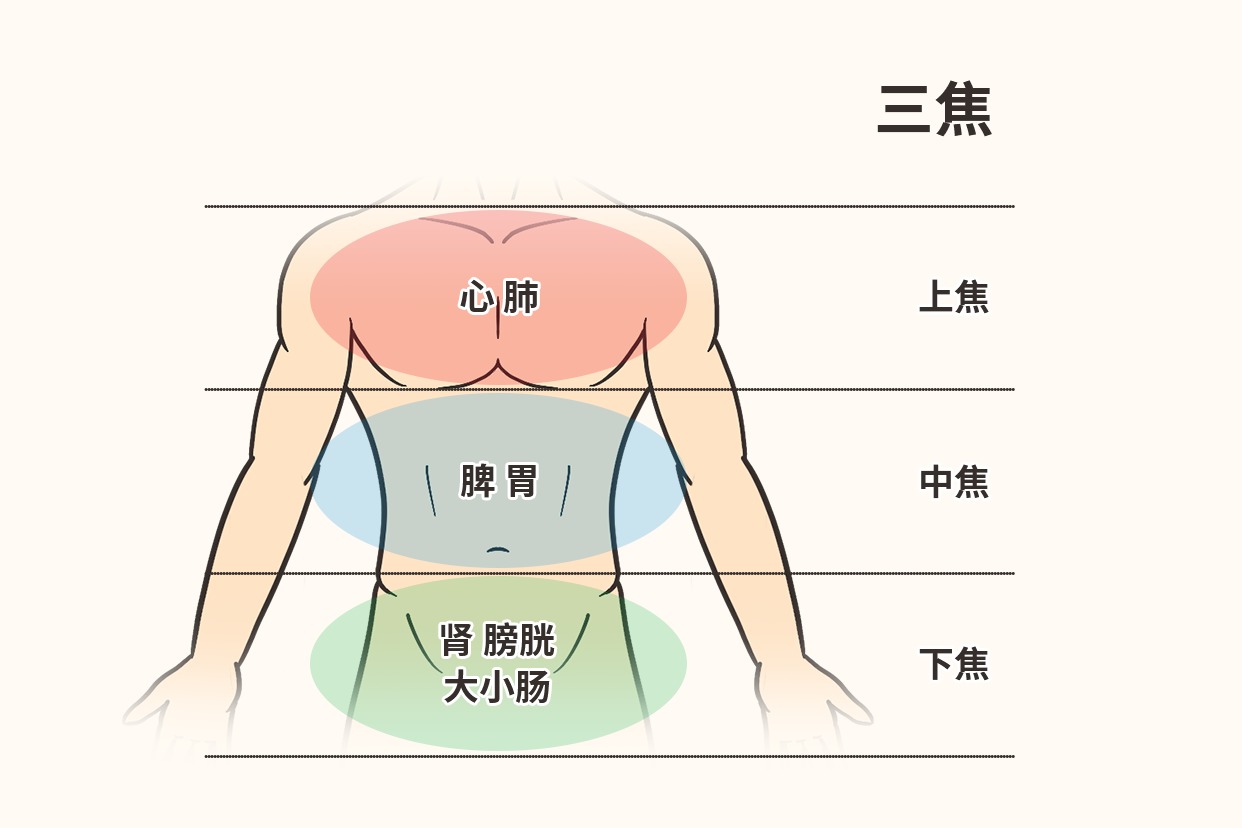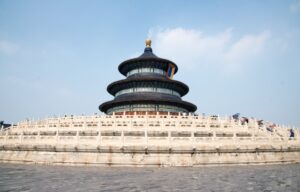Sanjiao Blockage Leading to Illness

Sanjiao, or the triple burner, regulates the body’s qi and is the leader of the five zang and six fu organs. Modern medical research indicates that Sanjiao is closely related to the endocrine system and the microcirculatory blood vessels, forming a large system that connects the body through qi, blood, meridians, and body fluids, creating a large circulation network. Blockage of Sanjiao is considered the root cause of various chronic diseases.
What is Sanjiao?
Sanjiao is a unique term in the theory of zang-fu organs. It is a collective term for the upper jiao, middle jiao, and lower jiao. It is one of the six fu organs and the largest among them, also referred to as the external fu or solitary organ. Sanjiao governs the ascent and descent of qi and the circulation of body fluids. In the five elements, it belongs to fire, and its yin-yang attribute is yang.
Anatomical Nature of Sanjiao
There has been historical debate on whether Sanjiao has a physical form. Even among those who believe it has a form, there is no consensus on its exact nature. However, the understanding of its physiological functions is relatively consistent.
Sanjiao, as one of the six fu organs, is generally thought to be a large cavity distributed in the thoracoabdominal region, encompassing various organs, hence the term “solitary viscus.”
As Zhang Jingyue described: “Sanjiao is indeed an organ, it is a large cavity outside the zang-fu organs but inside the torso, encompassing all organs within a single cavity.”
Physiological Functions of Sanjiao
- Conduction of Yuan Qi:
Yuan qi (original qi) is the fundamental qi of the human body, originating from the kidneys and transformed from congenital essence, nourished by postnatal essence. It is the root of the yin-yang balance in the zang-fu organs and the driving force of life activities. Yuan qi is distributed to the zang-fu organs through Sanjiao, energizing and promoting the functions of each organ. Thus, Sanjiao is the pathway for the movement of yuan qi. The movement of qi is a basic characteristic of life. Sanjiao’s ability to conduct yuan qi provides the impetus for the qi transformation activities of the organs. - Regulation of Water Pathways:
The metabolism of body fluids involves multiple organs working together in a complex physiological process. The upper jiao (lungs) is the source of water, regulating water pathways through its dispersing and descending functions. The middle jiao (spleen and stomach) transforms and distributes fluids to the lungs. The lower jiao (kidneys and bladder) performs evaporation and gasification, returning fluids to the spleen and lungs for metabolism and forming urine to be excreted. Sanjiao provides the pathway for the generation, distribution, ascent, descent, and excretion of body fluids. The coordination and balance of water metabolism through Sanjiao are referred to as “Sanjiao qi transformation.” The water-regulating function of Sanjiao essentially summarizes the roles of the lungs, spleen, and kidneys in fluid metabolism. - Transportation of Nutrients:
Sanjiao facilitates the digestion and absorption of food, assisting in the distribution of nutrients and the excretion of waste. This function encompasses the activities of the spleen, stomach, liver, kidneys, heart, lungs, and intestines in food digestion, absorption, and excretion.
Sanjiao Blockage Leading to Chronic Illness
Sanjiao regulates the body’s qi and is closely linked to the endocrine system and microcirculatory blood vessels. Blockage of Sanjiao is the root cause of various chronic diseases.
In middle-aged and elderly individuals, multiple diseases often arise due to complex pathogenesis involving both deficiency and excess, affecting multiple organs. The fundamental issue is often “Sanjiao blockage,” which is the root cause of common, chronic, and stubborn diseases in these age groups.
- Upper Jiao Blockage: Leads to meridian obstruction, qi and blood stagnation, resulting in hypertension, hyperlipidemia, rheumatic diseases, cervical spondylosis, etc.
- Middle Jiao Blockage: Causes lumbar muscle strain, lower back pain, disc herniation, postpartum conditions in women, chronic gastrointestinal issues, constipation, etc.
- Lower Jiao Blockage: Impairs liver and kidney functions, leading to male kidney deficiency, prostate diseases, female qi deficiency and blood insufficiency, menopause symptoms, and gynecological inflammations.










